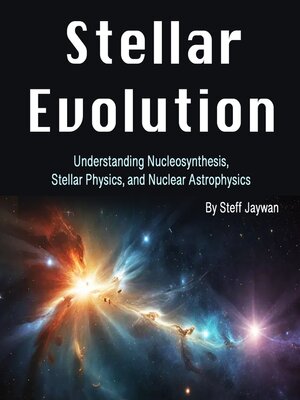Stellar Evolution
audiobook (Unabridged) ∣ Understanding Nucleosynthesis, Stellar Physics, and Nuclear Astrophysics
By Steff Jaywan

Sign up to save your library
With an OverDrive account, you can save your favorite libraries for at-a-glance information about availability. Find out more about OverDrive accounts.
Find this title in Libby, the library reading app by OverDrive.



Search for a digital library with this title
Title found at these libraries:
| Library Name | Distance |
|---|---|
| Loading... |
Stellar evolution refers to the process by which a star changes over the course of time. This field of astrophysics studies the formation, life, and death of stars, which involves a series of complex physical processes and transformations. Here, we outline the key stages and concepts in stellar evolution.
Stars form from giant molecular clouds, regions rich in gas and dust. Under the influence of gravity, these clouds collapse and fragment, leading to the formation of dense cores. When a core reaches a critical density, nuclear fusion ignites in its center, giving birth to a protostar.
Once nuclear fusion stabilizes, converting hydrogen into helium in the core, the star enters the main sequence phase. This is the longest stage in a star's life, where it remains in hydrostatic equilibrium, with gravitational forces balanced by radiation pressure from fusion. The duration of this phase depends on the star's mass. Low-mass stars, such as red dwarfs, can remain on the main sequence for tens to hundreds of billions of years. Intermediate-mass stars, like our Sun, stay on the main sequence for about 10 billion years. High-mass stars, such as blue giants, have much shorter main sequence lifespans, ranging from a few million to tens of millions of years.







